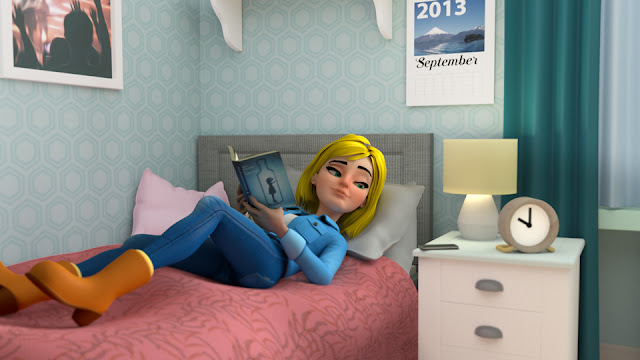From Concept to Screen: The Fascinating 3d Animation Process
3D animation is the process of creating moving images in a three-dimensional digital environment. It is a complex and highly technical process that requires expertise in a range of areas, including computer graphics, modeling, texturing, lighting, rigging, and animation. In this blog post, we will explore the 3D animation process, from concept to final output.
Concept and Storyboarding
The first step in the 3D animation
process is to develop a concept and storyboard. This involves creating a rough
outline of the story, characters, and settings that will be used in the
animation. The storyboard is a visual representation of the script, with each
scene broken down into individual frames. It is used as a blueprint for the
rest of the animation process.
Modeling and Texturing
Once the storyboard is complete, the next step is to create the 3D models of the characters and environments. This involves using specialized software to create digital 3D models of the objects and characters that will be used in the animation. Once the models are complete, they are textured to create the appearance of different materials, such as skin, hair, or metal.
Rigging
After the models and textures are
complete, the next step is to rig the characters. Rigging is the process of
adding a digital skeleton to the 3D model, which allows the animator to control
the movement and pose of the character.
Animation
Once the characters are rigged, the
animation process can begin. This involves using timeline-based animation
software to create movement and emotion for the characters. The animator can
manipulate the characters' poses, facial expressions, and movements to bring
them to life.
Lighting and Rendering
After the animation is complete, the
next step is to add lighting and render the final animation. This involves
setting up virtual lights in the 3D environment to create the desired mood and
atmosphere. Once the lighting is complete, the animation is rendered, which
means that the computer calculates and produces the final images of the
animation.
Post-Production
The final step in the 3D animationprocess is post-production. This involves using specialized software to edit and enhance the final animation. This can include adding special effects, sound effects, and music, as well as color grading and compositing.
In conclusion, 3d Animation Process is
a complex and highly technical process that requires expertise in a range of
areas, from concept development and storyboarding to modeling, texturing,
rigging, animation, lighting, rendering, and post-production. By following a
structured and systematic process, 3D animators can create visually stunning
and engaging animations that bring their ideas to life.




Great insights in this post! At TVS Cube, we provide professional 2D Animation Services that complement 3D workflows, turning concepts into engaging visuals through creativity, storytelling, and motion design expertise.
ReplyDelete